
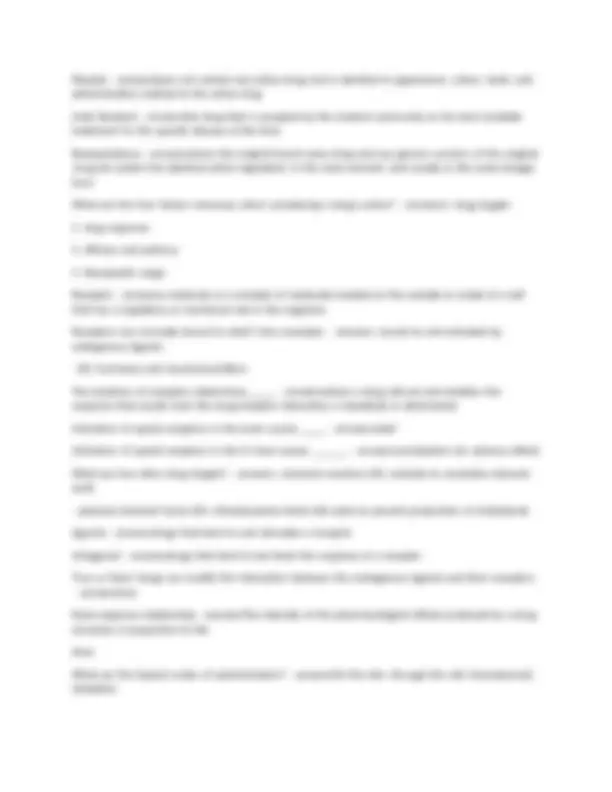
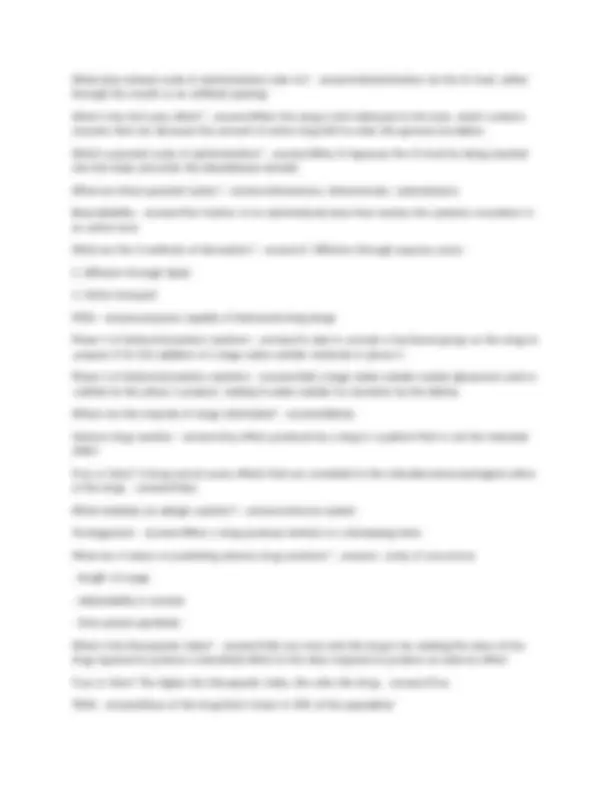
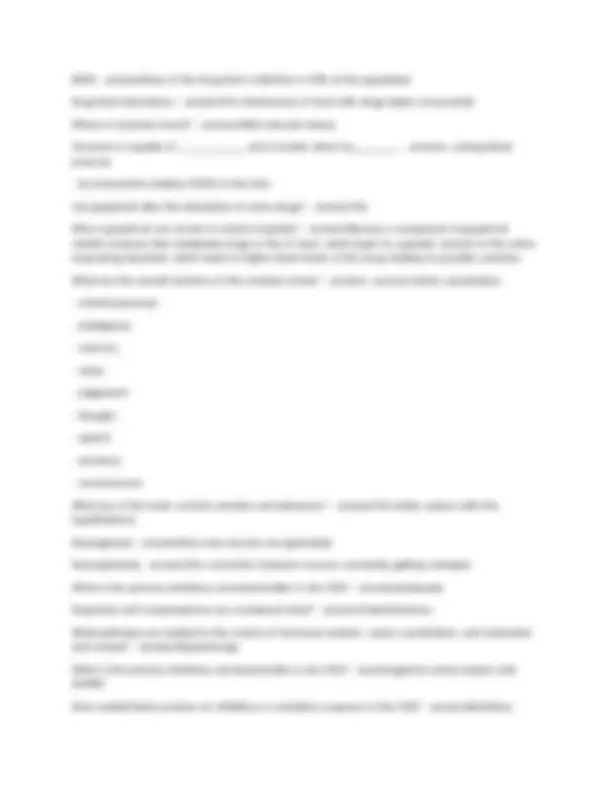
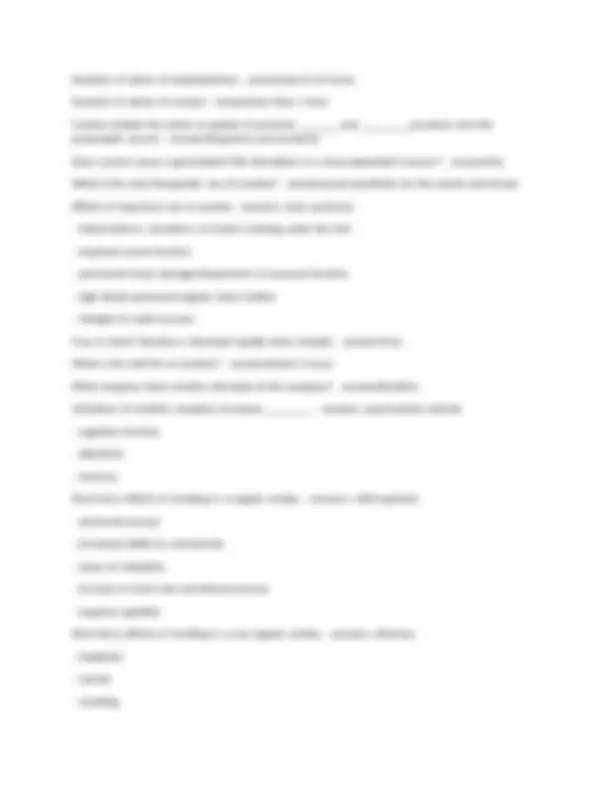
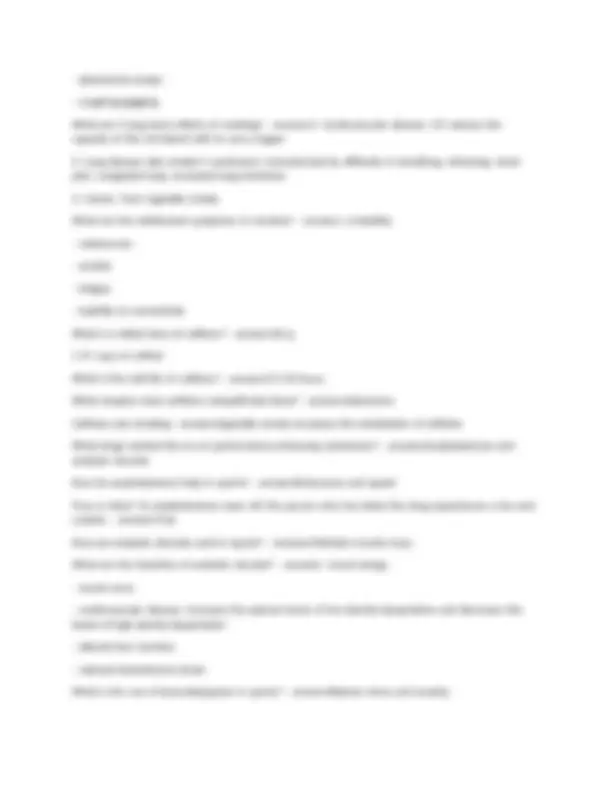
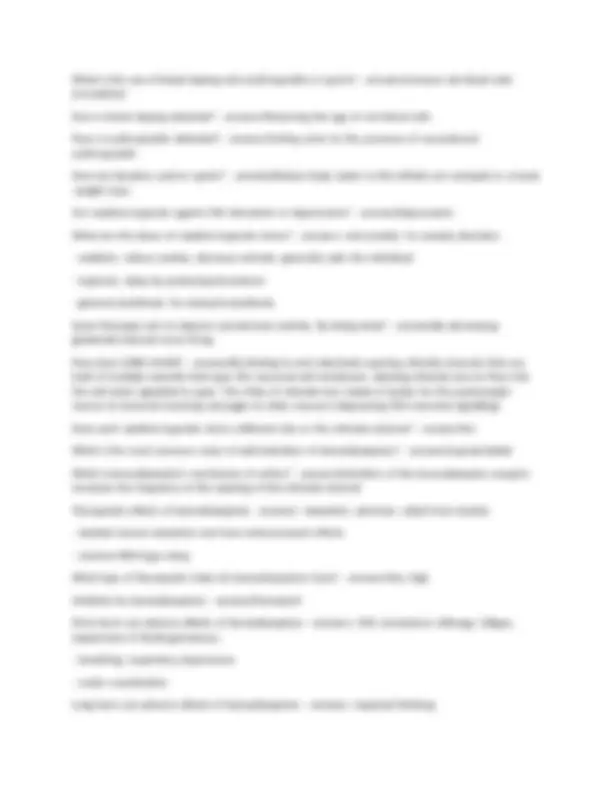
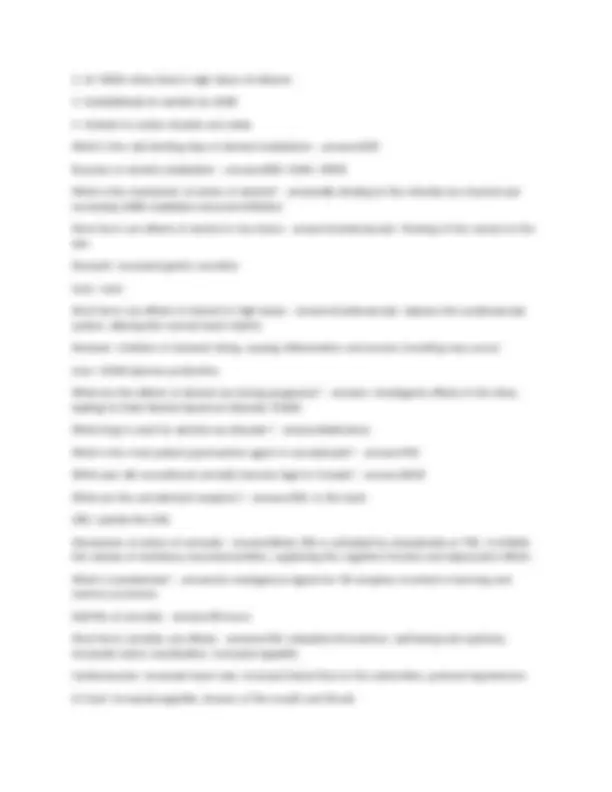
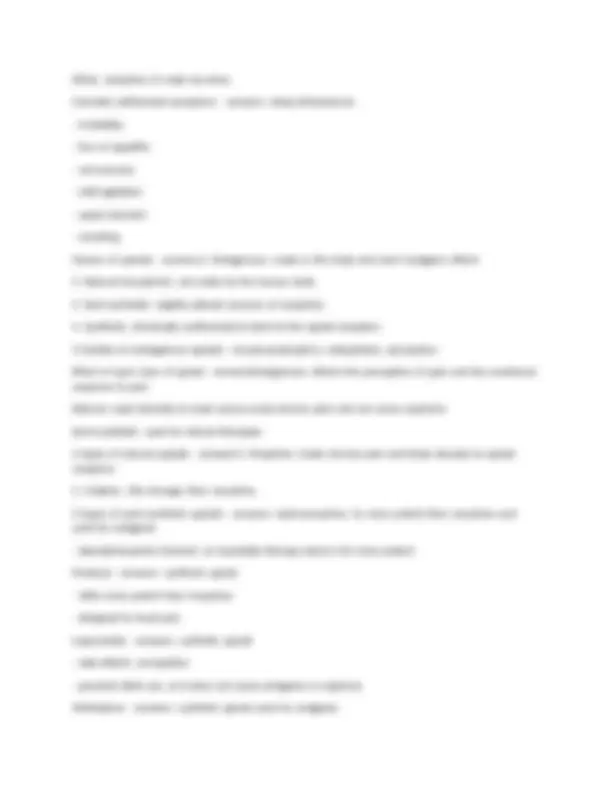
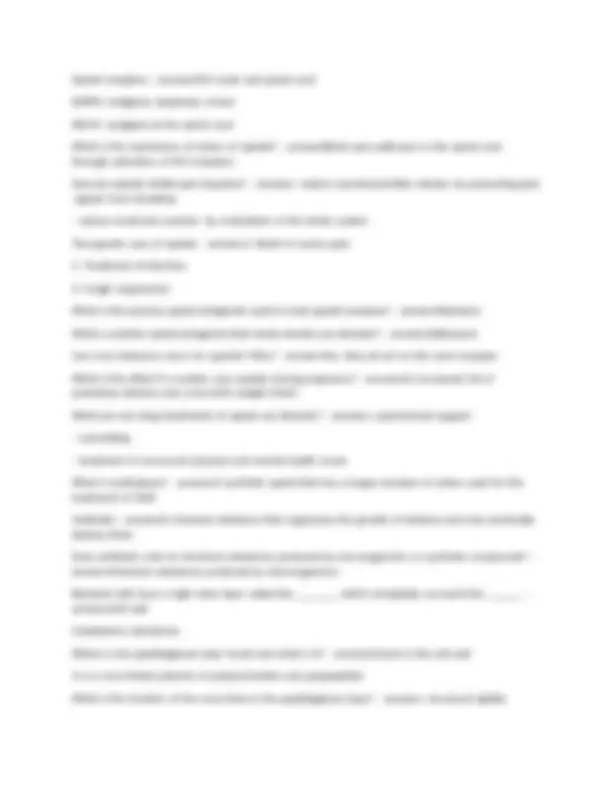
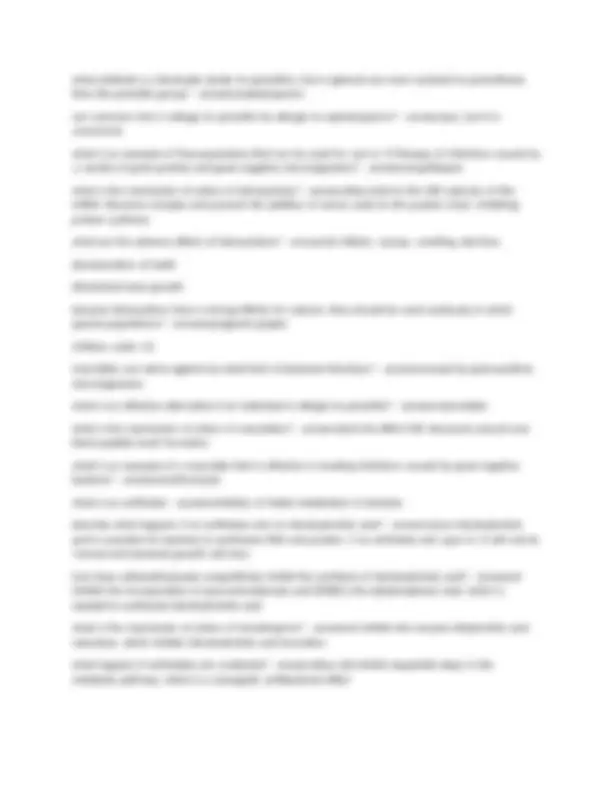
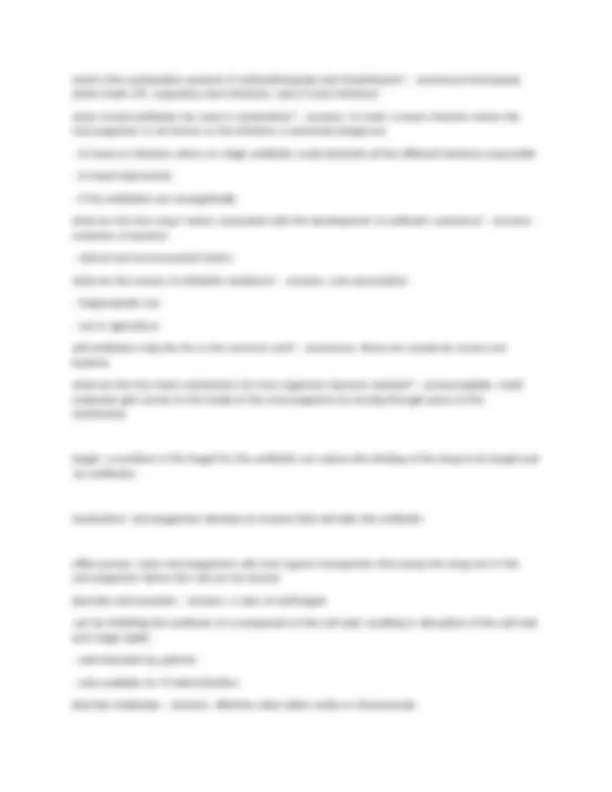
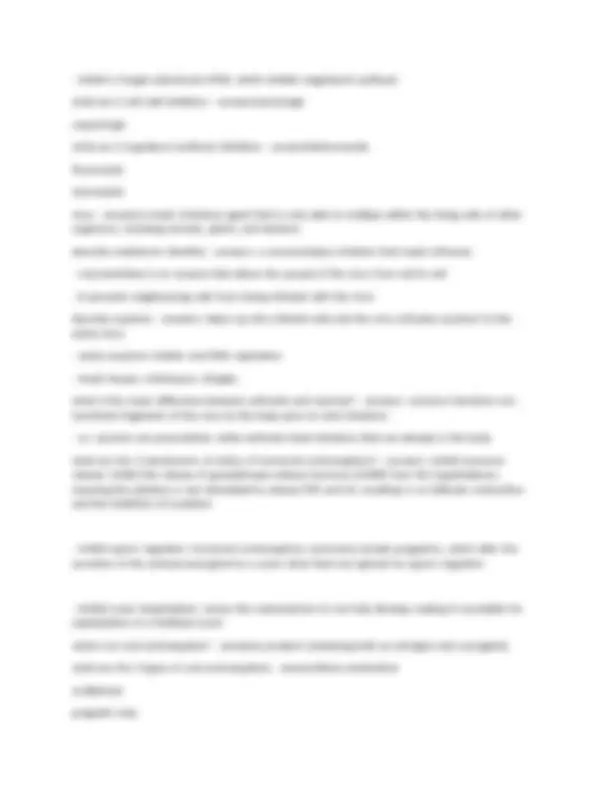
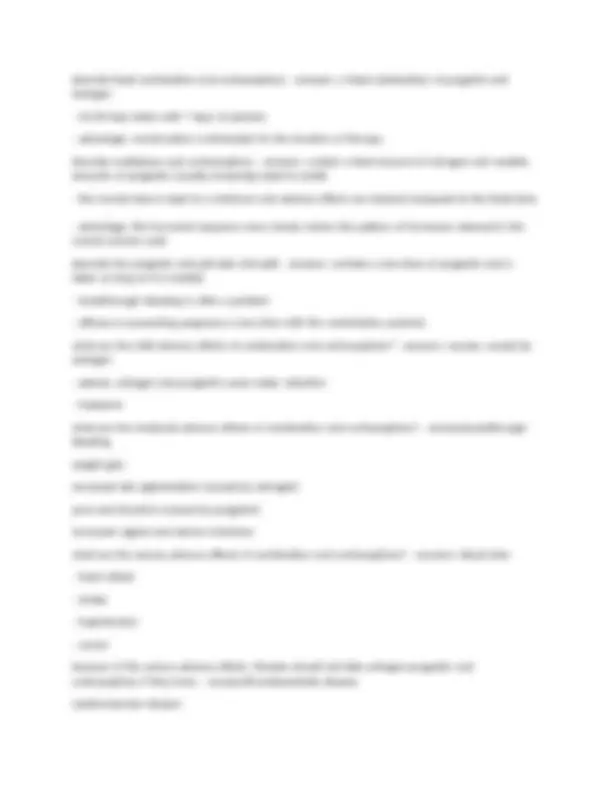
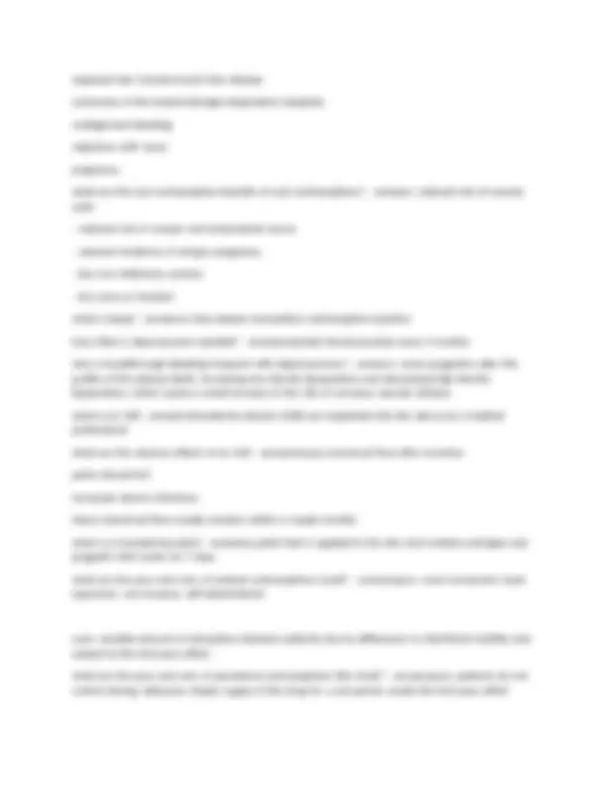
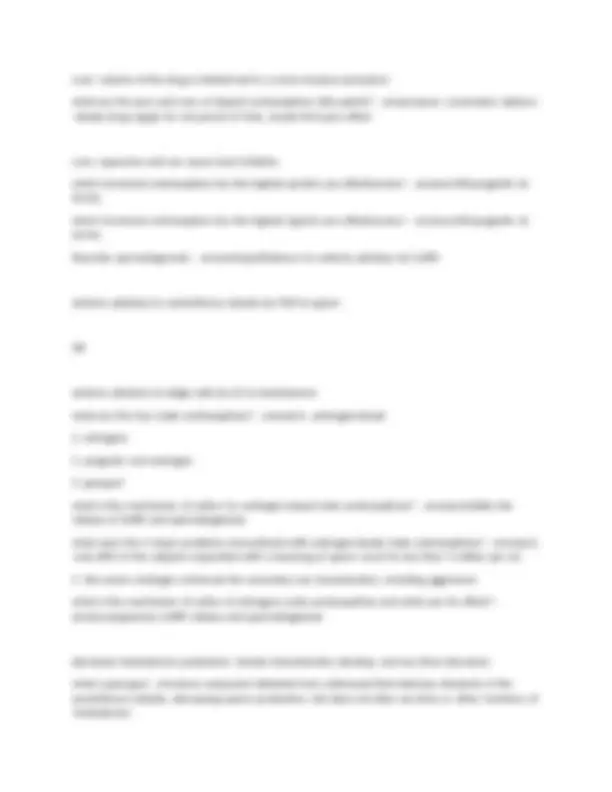
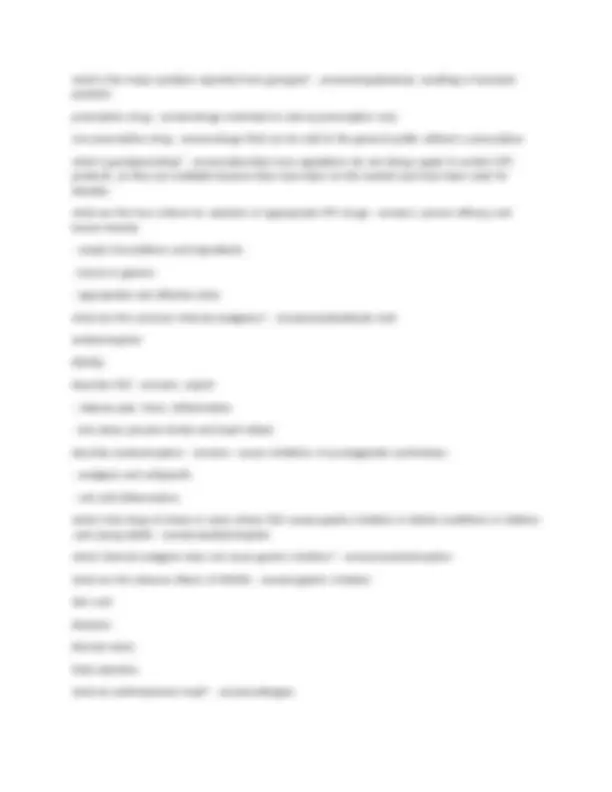
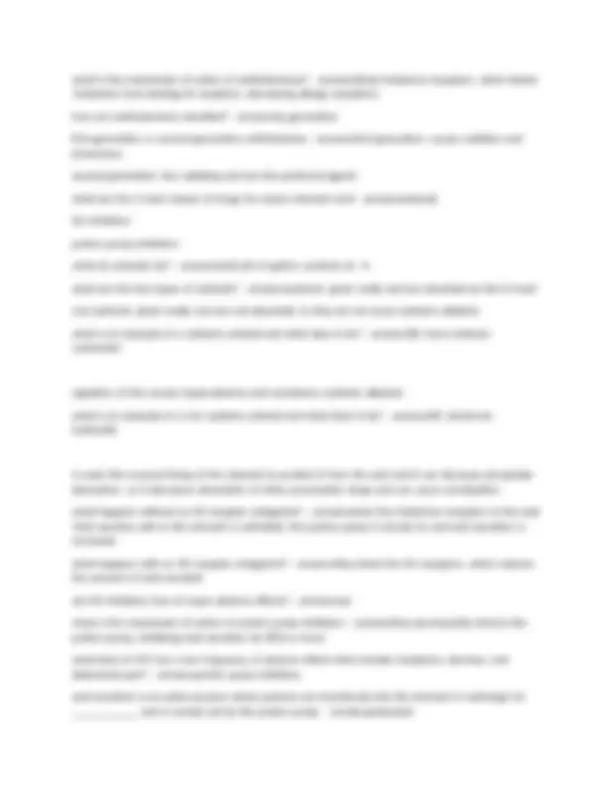
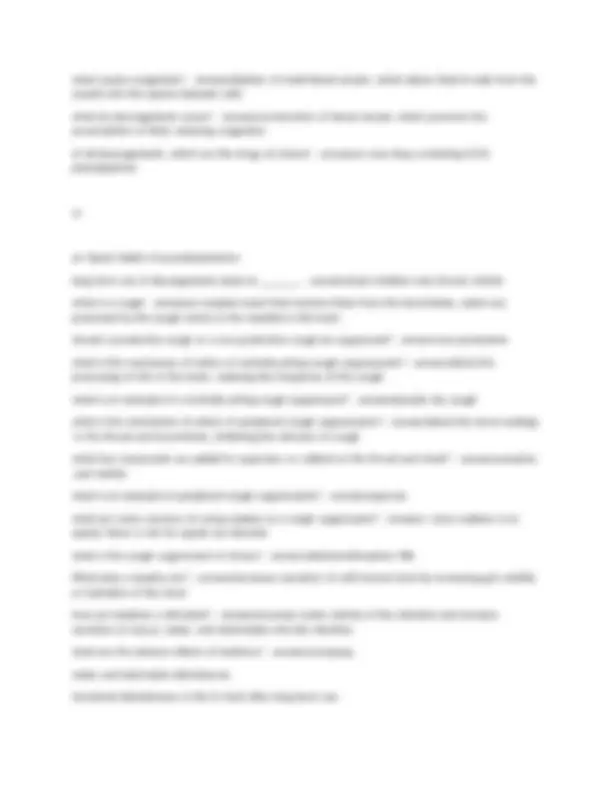
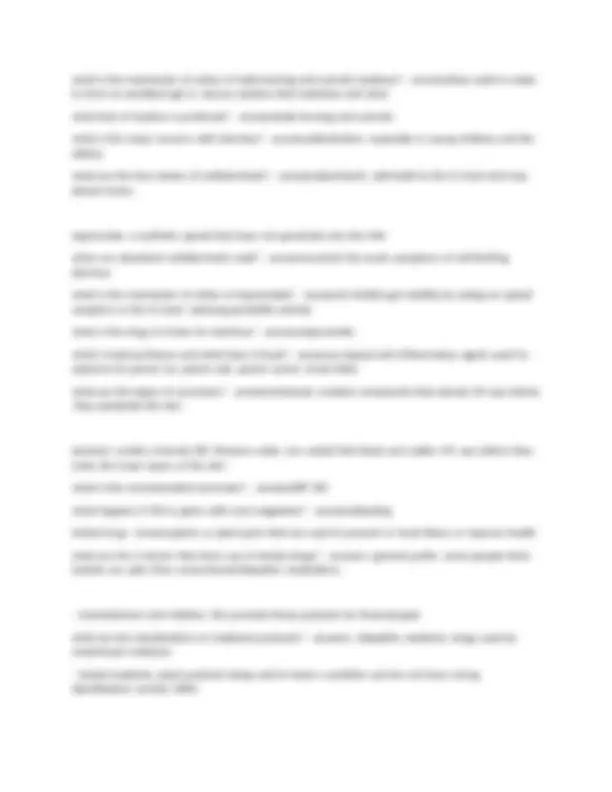
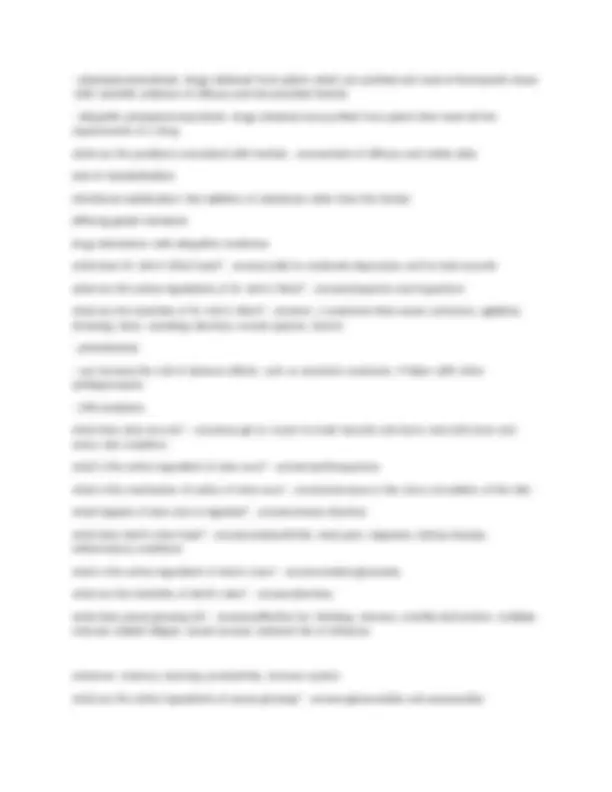
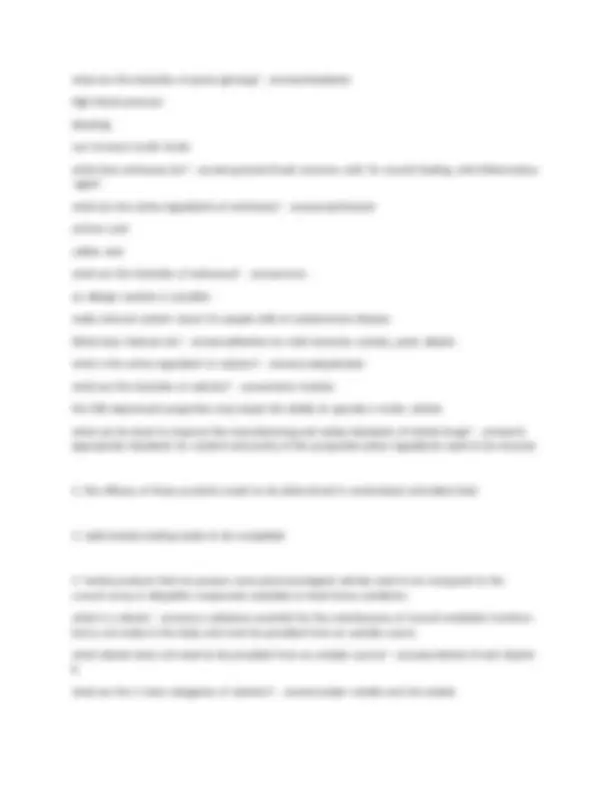
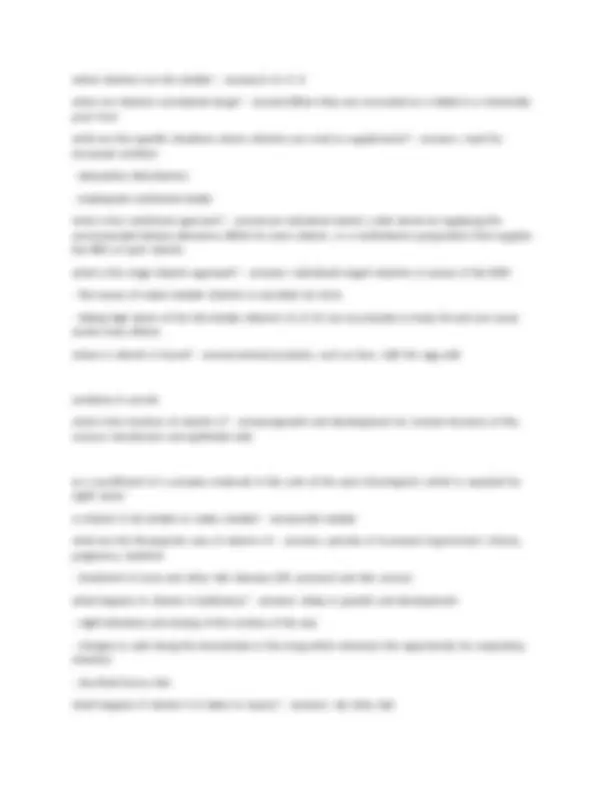
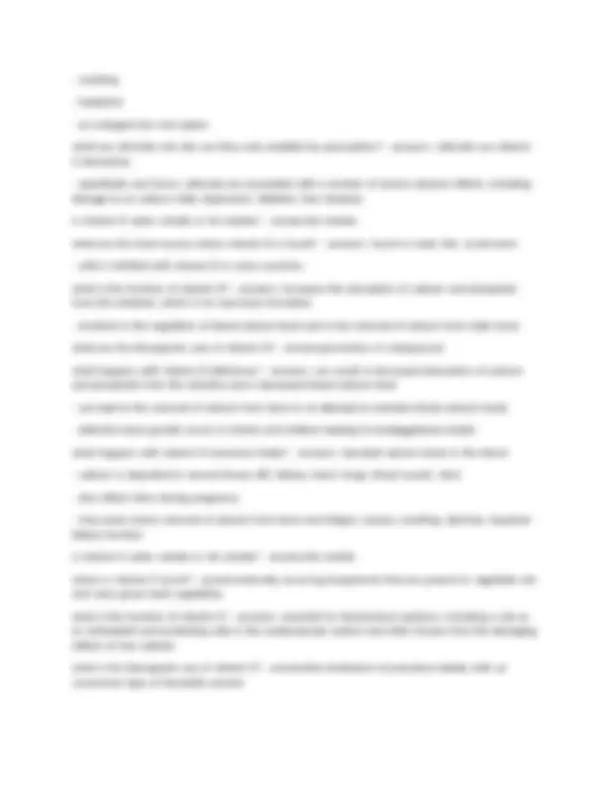
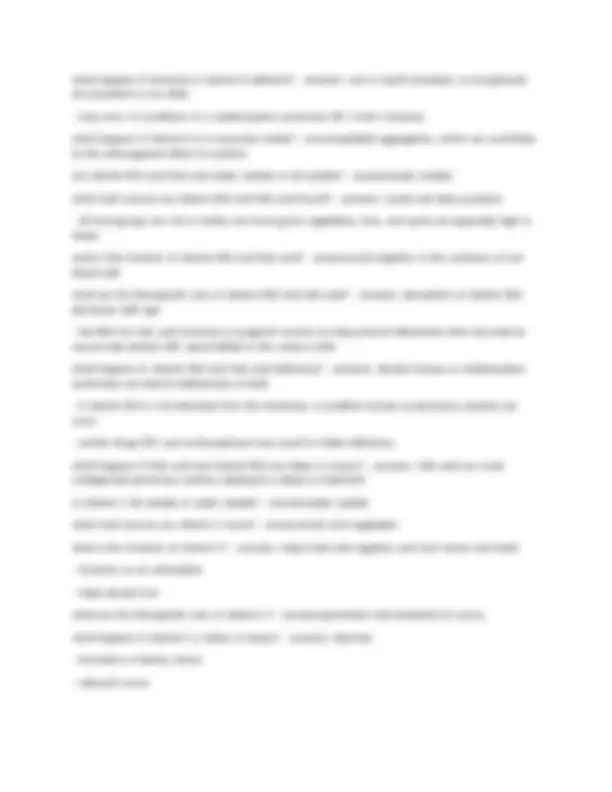

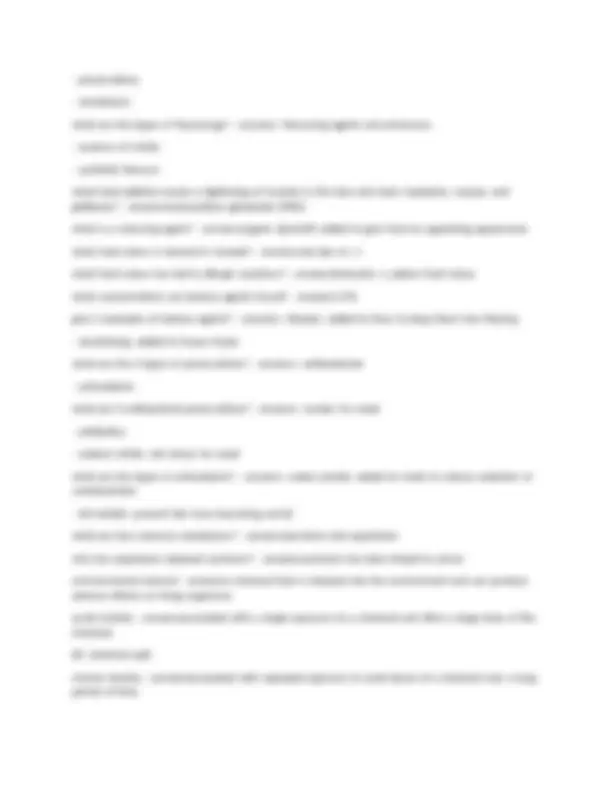
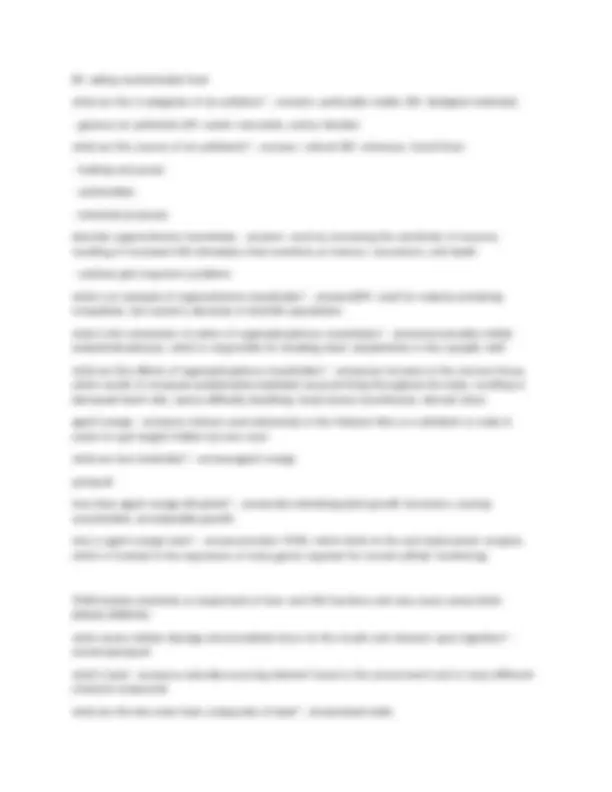
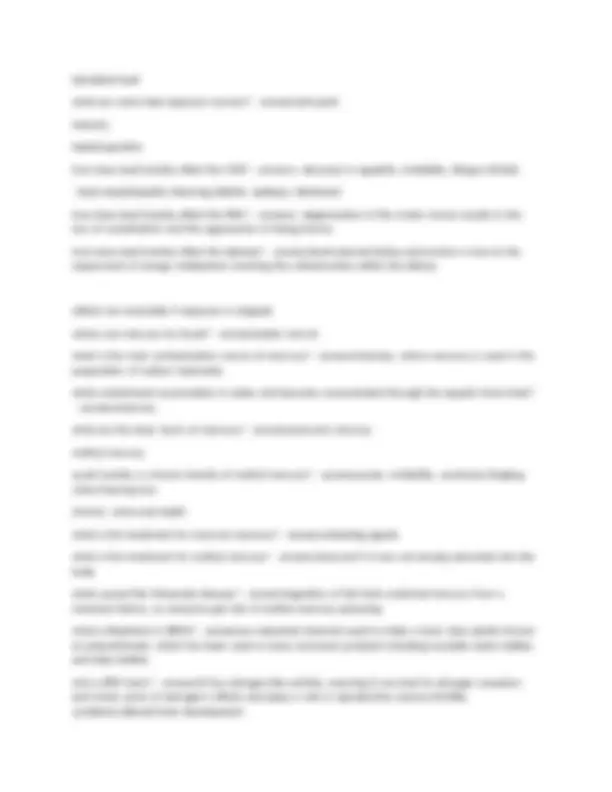
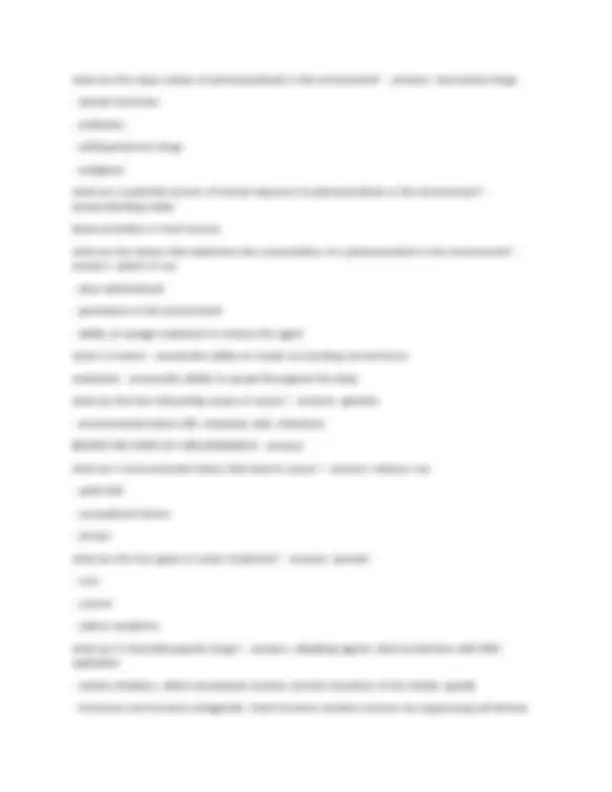
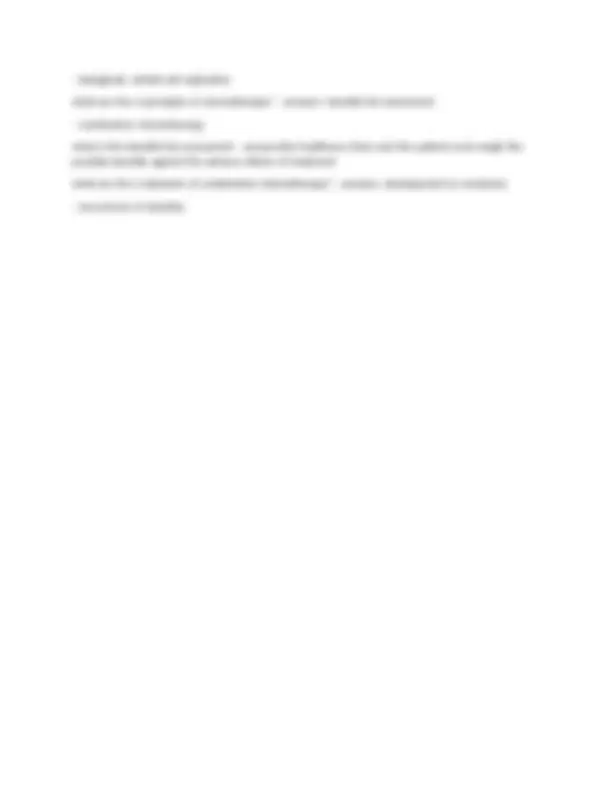


Study with the several resources on Docsity

Earn points by helping other students or get them with a premium plan


Prepare for your exams
Study with the several resources on Docsity

Earn points to download
Earn points by helping other students or get them with a premium plan
Community
Ask the community for help and clear up your study doubts
Discover the best universities in your country according to Docsity users
Free resources
Download our free guides on studying techniques, anxiety management strategies, and thesis advice from Docsity tutors
PHAR 100 Exam – Real Exam Questions and Correct Answers
Typology: Exams
1 / 38

This page cannot be seen from the preview
Don't miss anything!































Who |discovered |morphine? |- |answersSerturner From |what |drug |was |ephedrine |isolated? |- |answersMa |Huang What |does |ephedrine |treat? |- |answersasthma What |are |the |two |uses |of |curare? |- |answers1. |Poison: |used |on |arrow |tips |to |cause |muscle |paralysis | and |death |by |respiratory |paralysis
Who |and |when |developed |Sulla |drugs? |- |answersGerard |Domagk |in |the |1930s Who |and |when |discovered |Penicillin? |- |answersAlexander |Fleming |in |the |1940s Who |and |when |discovered |streptomycin? |- |answersSeaman |Waksman |in |the |1950s What |are |the |five |key |steps |of |drug |development? |- |answers1. |basic |research |and |drug |discovery
What |does |enteral |route |of |administration |refer |to? |- |answersAdministration |via |the |GI |tract, |either | through |the |mouth |or |an |artificial |opening What |is |the |first |pass |effect? |- |answersWhen |the |drug |is |first |delivered |to |the |liver, |which |contains | enzymes |that |can |decrease |the |amount |of |active |drug |left |to |enter |the |general |circulation What |is |parental |route |of |administration? |- |answersWhen |it |bypasses |the |GI |tract |by |being |injected | into |the |body |and |enter |the |bloodstream |directly What |are |three |parental |routes? |- |answersIntravenous, |intramuscular, |subcutaneous Bioavailability |- |answersThe |fraction |of |an |administered |dose |that |reaches |the |systemic |circulation |in | an |active |form What |are |the | 3 |methods |of |absorption? |- |answers1. |Diffusion |through |aqueous |pores
ED50 |- |answersDose |of |the |drug |that |is |effective |in |50% |of |the |population Drug-food |interactions |- |answersThe |interference |of |food |with |drugs |taken |concurrently Where |is |tyramine |found? |- |answersWell |matured |cheese Tyramine |is |capable |of |____________ |and |is |broken |down |by________. |- |answers- |raising |blood | pressure
Duration |of |action |of |amphetamines |- |answersUp |to | 12 |hours Duration |of |action |of |cocaine |- |answersLess |than | 1 |hour Cocaine |inhibits |the |active |re-uptake |of |primarily |_______ |and |_________serotonin |into |the | presynaptic |neuron |- |answersDopamine |and |serotonin Does |cocaine |cause |a |generalized |CNS |stimulation |in |a |dose-dependent |manner? |- |answersYes What |is |the |only |therapeutic |use |of |cocaine? |- |answersLocal |anesthetic |for |the |mouth |and |throat Effects |of |long |term |use |of |cocaine |- |answers- |toxic |psychosis
What |is |the |use |of |blood |doping |and |erythropoietin |in |sports? |- |answersIncrease |red |blood |cells | (circulation) How |is |blood |doping |detected? |- |answersMeasuring |the |age |of |red |blood |cells How |is |erythropoietin |detected? |- |answersTesting |urine |for |the |presence |of |recombinant | erythropoietin How |are |diuretics |used |in |sports? |- |answersReduce |body |water |so |the |athlete |can |compete |in |a |lower |weight |class Are |sedative-hypnotic |agents |CNS |stimulants |or |depressants? |- |answersDepressants What |are |the |doses |of |sedative-hypnotic |doses? |- |answers- |anti-anxiety: |for |anxiety |disorders
Other: |reduction |of |male |sex |drive Cannabis |withdrawal |symptoms |- |answers- |sleep |disturbances
an |example |of |cell |wall |synthesis |inhibitors |- |answerspenicillins |and |cephalosporins an |example |of |DNA |synthesis |inhibitors |- |answersfluoroquinolones an |example |of |protein |synthesis |inhibitors |- |answerstetracyclines an |example |of |metabolic |inhibitors |- |answersantifolaxe |drugs who |successfully |isolated |penicillin? |- |answersFlorey |and |Chain what |are |the |two |types |of |penicillins |that |exist? |- |answers- |natural |(EX: |penicillin |G)
what |is |the |combination |product |of |sulfamethoxazole |and |trimethoprim? |- |answersco-trimoxazole, | which |treats |UTI, |respiratory |tact |infections, |and |GI |tract |infections when |should |antibiotics |be |used |in |combination? |- |answers- |to |treat |a |severe |infection |where |the | microorganism |is |not |known |or |the |infection |is |extremely |dangerous